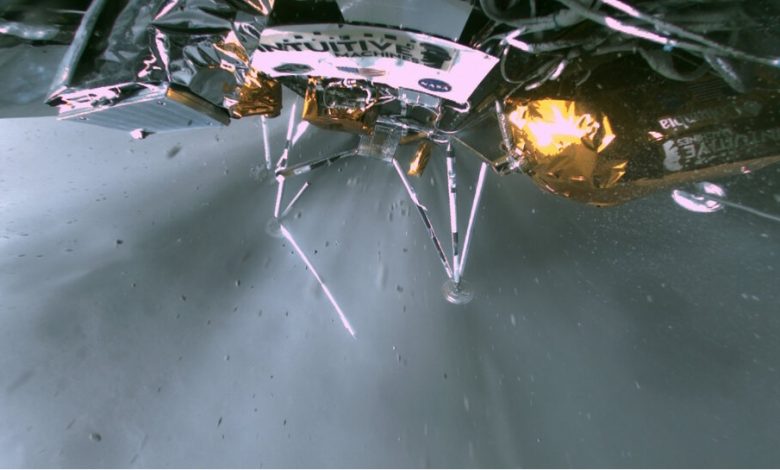Odysseus Moon Lander Heads Into a Cold Lunar Slumber
The commercial spacecraft’s builder, Intuitive Machines, released new images from the moon’s surface as the company described plans to try to wake it up in two to three weeks.

Soon it will be time to say, “Good night, moon lander.”
Last week, Odysseus, a privately built robotic lunar lander, became the first American spacecraft to set down on the moon in more than 50 years, and the first nongovernmental effort ever to accomplish that feat.
But like the Homeric Greek hero it was named after, the lander has not had an easy journey with a neat, happy ending. The spacecraft encountered a series of near-calamitous challenges, almost lost its way, then landed crookedly.
During a news conference on Wednesday afternoon, Intuitive Machines, the Houston-based company that built Odysseus, said the spacecraft continued to operate, but that it would be put into a planned shutdown within a few hours.

Despite everything that did not work quite right, Steve Altemus, the chief executive of Intuitive Machines, called the mission “an unqualified success.”
Odysseus achieved its main objective, Mr. Altemus said, which was “to touch down softly on the surface of the moon, softly and safely, and return scientific data to our customers.”
Engineers toiled over the weekend, trying to speed up the communications with Odysseus and retrieve data.
The timeline for how long the mission might last shifted several times.
Originally, it was to last nine or 10 days, until the sun set on the solar-powered spacecraft. But with Odysseus lying at an angle, its solar panels were not in the ideal orientation to collect sunlight and generate power.
The company suggested earlier this week that dwindling power might end lander operations on Tuesday. Then, on Tuesday, it said the vehicle could hang on for as long as 20 additional hours. Wednesday’s announcement added a few more.
“Odie will sleep after that,” Mr. Altemus said, using the lander’s nickname.
On Wednesday, the story of how Odysseus got to the ground without crashing into pieces became even more incredible.
Intuitive Machines had already disclosed that the laser instrument on Odysseus for measuring its altitude during descent was not working. Safety mechanisms to prevent the lasers from firing accidentally on Earth had never been removed.
“It’s the first time anybody’s flown this algorithm, and it exceeded expectations, because we lived to tell about it,” Mr. Altemus said.
Last Thursday, it was not immediately evident that Odysseus had arrived in working order.
For several anxious minutes after the time of landing passed, flight controllers at Intuitive Machines waited for a radio signal from the lander to confirm that it had reached its destination in the moon’s south pole region. When the signal was detected, it was faint, indicating that the spacecraft’s antennas were pointing away from Earth.
Source: The New York Times























